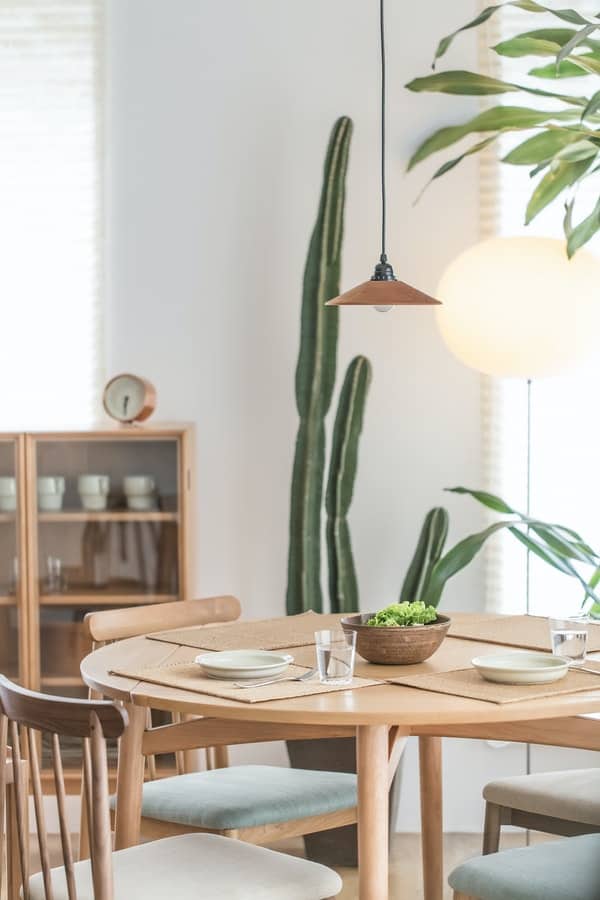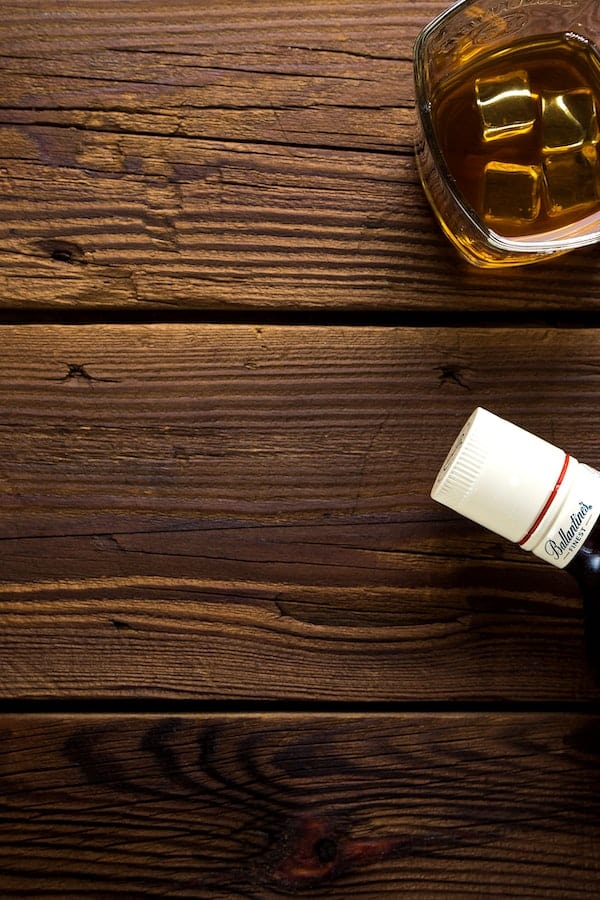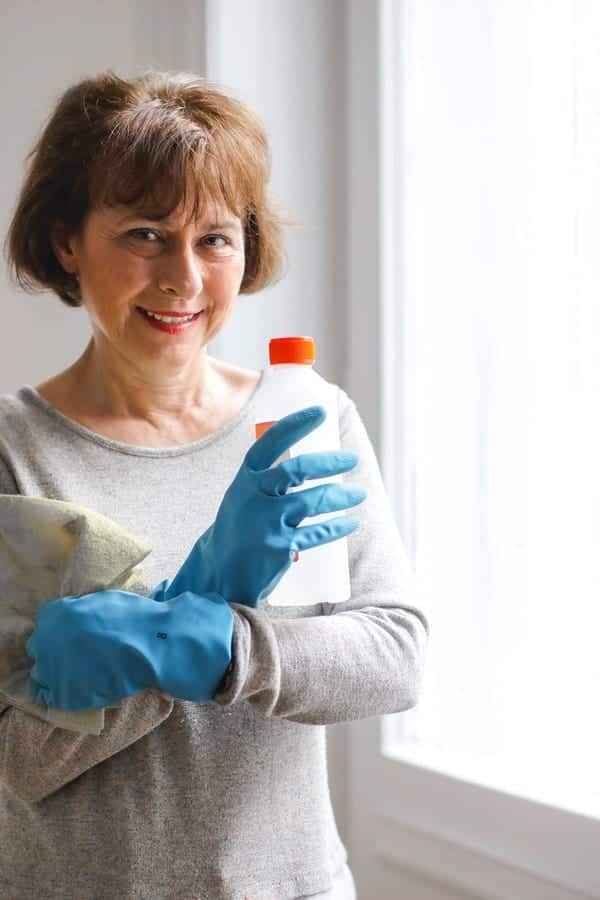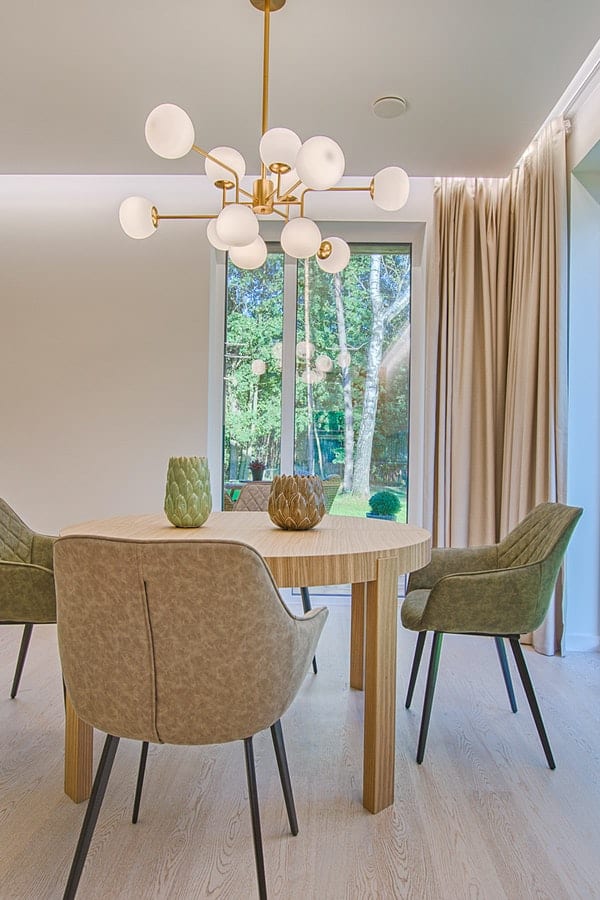Wooden tables are very durable but over time they can become stained and sticky. Tables for home and commercial are often finished with oils, stains, paints, and resins which can wear off over time.
Signs that the finish of your table is wearing off are stickiness, peeling, discoloration, and stains that appear quickly. If this starts to happen to you there is no need to think about buying a new table or paying for a professional furniture cleaner as there are ways to clean your sticky table.
We take a look at the best products for cleaning wooden tables and how you can look after your table to prevent stickiness. Ranging from varnishes and homemade solutions, we have all of your table cleaning needs covered.
There may be affiliate links in this article. You can read more about this in my disclosure.
Why Does my Wooden Table Get Sticky?

If you begin to notice a sticky or gummy residue on your wooden table it is time to take action. You may take good care of your table and are wondering how it got sticky in the first place.
Even the cleanest how people will gradually begin to see their wooden table get a build-up of dirt and grease as a dining table sees a lot of action. Between serving dinner on the table to kids with sticky hands crafting on it, there is bound to be grease, food, and moisture that accumulates to the sticky mess you are currently worried about.
You will also find that the wooden table in the kitchen may get stickers more quickly as there is a lot of moisture in the room which can cause debris and dirt to stick to it.
As most wooden tables have a coating, such as wax or varnish, it is not mean that even the most sticky tables can be brought back to their former glory with some care and attention.
In most cases, you can clean the surface using the methods explained below. In rare circumstances, you will need to strip and refinish the surface of the table.
Cleaning Dark Wood Tables

To maintain the finish of your dark wood you should carry out the blow steps when your table is feeling dirty or sticky:
- Use a microfibre cloth to get rid of any dust from the table so that it can be cleaned the best you can.
- Rinse the cloth out well if you are planning to use the same one or, for ease, take a clean cloth before moving on to the next step
- Mix equal parts water and vinegar into a large bowl or bucket and use the second cloth to dip in the water and wipe the table.
- You may want to pour the solution into a clean spray bottle and spray it directly onto the table before wiping. Ensure you wipe in the direction of the grain and that your cloth is not too wet.
- Repeat several times until the cloth comes away clean and you can no longer see any sticky residue on your table.
- Use another clean cloth or a towel to soak up the excess moisture on the table so that the water does not damage the wood
- If the water and vinegar mixture does not work you can try to use mineral spirits. You should take a damp cloth and dab on the mineral spirits, again wiping in the same direction as the grain.
- You should try an inconspicuous area of the table to make sure the mineral spirits do not strip any of the varnish/finishing away from the wood or stain your table.
- If there are any crevices or hard-to-reach places on your table then using a Q tip or a soft toothbrush can help get the dirt out.
Cleaning Light Wood Tables
For light wood tables, you may want to clean them differently as this type of wood may be more susceptible to staining.
You can try the vinegar and water solution as this should work on any type of wood but a lot of pf people choose tea as a cleaning agent for light wood.
- Make a mug of hot black teasing 2 teabags steeped in a cup of hot water from the kettle or a pan. Allow the tea to cool.
- Use a clean microfibre cloth to apply the tea to the surface of the tables and wipe in a motion that goes in line with the grain of the wood.
- Use a new clean cloth to remove the excess moisture that may be left on the table
- Once you have finished cleaning with the tea wipe down with a regular damp cloth to ensure the table is fully clean. If you still see dirt or feel stickiness repeat the above processes
- Once you are happy that the dirt has been removed and you have dried the surface of the table you can polish it to complete the finish
Problematic Dirt
If you have tried the above methods of cleaning your dark or light wood table and your table is still feeling sticky there are other options. There are commercial products on the market that can be found in supermarkets and hardware stores that are specifically designed for cleaning wooden tables.
You can buy polishes, stain removers, sticky stuff, and much more to solve all of your dirty table requirements. You may find that you need a product that advertises dissolving the build-up of wax such as Guardsman Clean and Polish.
You should follow the instructions on the product that you buy as you will need to use the correct cloths and not do anything that would ruin your table. Most brands will ask you to test a section of your table before cleaning all of it just to make sure there are no marks left.
[amazon box=”B00BJN1WRC” template=”vertical”]If you have stubborn marks, not the table, such as paint or a sticky residue that is just not shifting then you may need to use a scraper made from plastic. Be careful using anything other than plastic as it could scratch your table.
Use your scraper to help move the stubborn marks up from the table and then use one of the above methods to remove the remaining dirt and stickiness from the table.
[amazon box=”B086JFHVQK” template=”vertical”]Removing Cup Stains from your Table
If you have ring stains from cups on your table you can remove them using vinegar and water. In addition to the equal parts, of water and vinegar used in the recipe above you can add one part of olive oil to help remove the stains.
You should dab the mixture onto a clean cloth and use it to wipe around the ring stain. Once the stain looks to be gone you should take another clean cloth and wipe the mixture off the table and then polish as normal.
It is best to use coasters or table protectors to protect your table from any drips or spills.
Preventing Your Table Getting Sticky—5 Top Tips on Keeping your Table in the Best Condition

1. Dust often
Dust particles accumulate very quickly and a build-up can lead to big problems. Keeping a microfibre cloth at hand will make it easier to get into the habit of dusting down your table at least once per week.
If you notice that dirt has accumulated then you may need to dampen the cloth to get up more of the dirt.
[amazon box=”B07HRCDDL1″ template=”vertical”]2. Use Table Mats and Coasters
Protecting your table from food and drink spillages will ensure that moisture on the table is kept to a minimum. You should keep napkins or cloths at hand so that people do not wash their hands on your table.
3. Use a Tablecloth
A tablecloth can help protect your table from getting dirty and developing stains, particularly if your children use the table for arts and crafts.
Using a tablecloth at meal times is advised especially if you have children who will spill their food or wipe their hands on the table when they become greasy.

4. Keep your Table Clutter-Free
If you have a lot of clutter on your table regularly you will not be able to clean it properly and you may risk developing dirt and mold spots underneath items that have been left to sit for a long time.
5. Keep your Table away from the Radiator
Heat can damage your table without you knowing as the wood struggles to adapt to the quick temperature changes causing it to swell and warp.
Warping can also occur when the humidity levels are high so make sure you use your extractor fan and open doors and windows if your table is in your kitchen. In addition to following the above procedures for cleaning your wooden table, you can do the same with any wooden chairs that you have.
While the chairs will not get as dirty as your table they can be prone to spills and a built of dirt from shoes hitting the legs.



